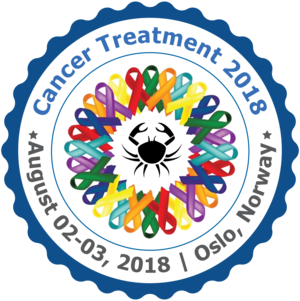
MC Arias-Blanco
Spain
Title: IMPROVING SKIN CANCER DIAGNOSIS WITH TELEDERMATOSCOPY TECHNIQUE IN PRIMARY CARE
Biography
Biography: MC Arias-Blanco
Abstract
Knowing the advantages of the early diagnosis of skin cancer in Primary Care (PC) to avoid problems at the patients, especially in sunny areas, elderly and immobilized patients. In order to improve diagnosis we used the teledermatoscopy in our Health Centers (HC) for suspected cancerous skin lesions.
Background/aim: To evaluate the teledermatoscopy diagnosis and management of skin lesions in patients from areas which may not have ready access to a dermatologist by specially geographic isolated areas and elderly patients with mobilization problems to avoid displacement problems to the patients.
Methods :Teledermatology system was established to screening of pigmented dermatology lesions suspected of malignity in PC, especially isolated areas from the Reina Sofia Universitary Hospital (RSUH). Since September 2016 to February 2018, 214 patients belonged two HC ( La Sierra and Lucano) have been studied. In the first the visit the suspect diagnose has been done, some photos are taken using dermatoscopy to all of the lesions suspected of malignity and immediately they are sending by encrypted e-mail to the RSUH dermatologist. The suspect results were received by e-mail in the same day. Only suspected malignant lesions were referrals to dermatologist, doing the gold standard diagnosis, some was confirm to be treaty at HC of PC indicating the lesions treatment, not need treatment or to be request for dermatology study al the RSUH.
Results: Women 51%, men 49%. Middle age 61,73% (51,2% over 65 years old). Total malignant lesions 33,9% (basocellular carcinoma, epidermoid carcinoma, Bowen disease,Atypical nevus and melanoma) Non malignant lesions 66,9% (seborreic keratosis, actinic keratosis, non atypical nevus, lentigo). Suspicious lesions in PC before dermatoscopy which were indicated to go to Dermatology consultation: 83,7%. Kappa index: 0,67. Dermatology decisions: Go to the Hospital to confirm diagnose and treatment: 50%, not need treatment: 32,4%, treatment in HC: 17,6%. Hospital referrals avoied were 50%.
Conclusions: 1. Teledermatoscopy system is usefully to improving the screening of malignant skin lesions by its accessibility in the HC. 2. Teledermatoscopy is an efficient system to avoid displacement problems to the elder patients with malignant skin lesions especially in isolated rural areas.

